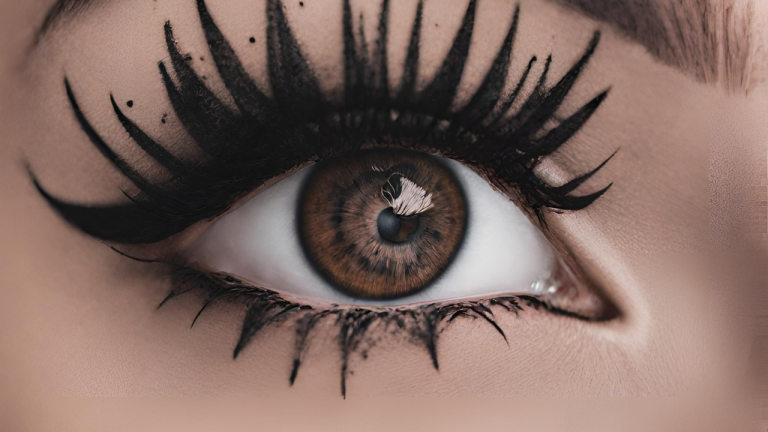The Complete Guide to Tattoo Scabbing: What’s Normal and How to Care for It
If you’ve just gotten inked, you might worry about the scabby layer forming over your new tattoo. Tattoo scabbing is a key part of the skin’s recovery journey. This guide will walk you through what to expect and how to care for your healing art.
Keep reading for all the tips and tricks!
Key Takeaways
- Tattoo scabbing is a natural and essential part of the healing process, protecting the area as new skin regenerates underneath.
- Proper aftercare includes gently washing with mild soap, moisturizing with lotion, not picking at scabs, and shielding your tattoo from direct sunlight.
- Signs of normal healing include light scabbing, some redness and swelling, and slight itching; these should improve without intervention within 6 to 14 days.
- Thick green or yellow scabs, excessive redness or swelling, pus, or discharge are warning signs of infection—seek medical help if you notice these symptoms.
- Using products like Wipe Outz™ can assist in maintaining cleanliness during the healing process while minimizing risk of irritation or infection.
What is Tattoo Scabbing?
Tattoo scabbing occurs as part of the natural healing process after getting a tattoo. It forms as a protective layer over the tattooed area and helps to shield it from bacteria and other harmful elements.
Definition
Scabbing is a natural part of the skin healing after tattoo work. As ink goes into the skin, your body treats it like a wound and forms scabs to protect the area while new skin regenerates underneath.
This process is crucial because it shields the delicate art as your immune system works to repair the punctured layers of skin. Although scab formation can look alarming, it’s an essential step in sealing in the ink and ensuring that your design remains crisp and vivid once healed.
Proper tattoo care routine involves gentle washing and moisturizing which assists these scabs in hardening over time, typically taking between 6 to 14 days before they start peeling off on their own.
It’s vital not to pick or scratch at them; doing so could damage both your tattoo and cause unnecessary pain. Keeping the area clean with warm water and mild soap also encourages faster healing without disrupting this important protective barrier.
Causes
Tattoo scabbing happens as a result of the body’s natural healing process after getting a tattoo. The formation of scabs is the skin’s way of protecting and repairing itself from the trauma caused by the tattoo needle.
Factors such as aftercare practices, individual healing speed, and the size and placement of the tattoo can influence the amount of scabbing that occurs during the healing process.
It is essential to follow proper aftercare instructions diligently to minimize excessive scabbing and promote smooth healing.
Signs of Normal Tattoo Healing
Light scabbing, redness and minor swelling, and slight itching are all normal signs of the tattoo healing process. These symptoms typically subside within a few days as the skin continues to heal.
Light scabbing
Light scabbing is a natural part of the tattoo healing process, usually appearing in the initial few days after getting inked. It’s normal for tattoos to form light scabs as they heal, and this is typically an indication that the skin is repairing itself.
During this stage, it’s crucial to resist picking or scratching at the scabs and ensure proper hygiene and moisturization to aid in the healing process.
Remember not to peel off any forming scabs; instead, allow them to fall off naturally as your skin heals. After about 6–14 days, these light scabs should begin to harden and flake off on their own accord as new layers of skin emerge underneath.
Redness and minor swelling
After the initial light scabbing, it is common to observe redness and minor swelling around the tattooed area. As part of the natural healing process, the skin may appear slightly inflamed due to increased blood flow and tissue repair.
This can cause a mild swelling sensation and a reddish appearance, which should not be alarming as long as it does not escalate into excessive inflammation or persistent discomfort.
It’s essential to keep an eye on any changes in redness and swelling around the tattoo. If these signs worsen over time or are accompanied by unusual pain, heat, or throbbing sensations, consulting with a professional may be necessary.
Slight itching
During the tattoo healing process, slight itching may occur, which is a common part of the skin’s natural response to the healing wound. This mild discomfort can be managed by gently patting or tapping the itchy area rather than scratching it, as scratching can lead to irritation and potential damage to the tattooed skin.
Additionally, keeping the skin moisturized with a gentle lotion can help alleviate some of the itching sensation.
Proper aftercare plays a crucial role in ensuring that your tattoo heals effectively and efficiently. It is vital to follow recommended aftercare instructions and keep your skin clean and moisturized while avoiding any actions that could disrupt the healing process.
Signs of Tattoo Infection
If you notice thick, green or yellow scabs on your tattoo, excessive redness and swelling, or any pus or discharge coming from the area, these could be signs of a tattoo infection.
It’s important to seek medical attention if you suspect an infection.
Thick, green or yellow scabs
Thick, green, or yellow scabs are not normal and could be a sign of infection. If you notice these types of scabs on your tattoo, it’s important to seek medical attention promptly.
In addition, excessive redness and swelling along with pus or discharge are also indicators of an infected tattoo. It is crucial to address any signs of infection right away to ensure proper healing and prevent long-term damage.
Remember that keeping the area clean and following aftercare instructions diligently can help prevent infections in the first place. Wash the tattoo gently once or twice a day using warm water and mild soap, then apply a thin layer of mild lotion onto the scabs for faster healing.
Excessive redness and swelling
Excessive redness and swelling around the tattooed area could indicate an infection. It is crucial to closely monitor the healing process and seek medical attention if these symptoms persist, as they may be signs of a more serious issue.
In case of excessive redness and swelling, it is essential to consult with a doctor immediately for proper evaluation and treatment.
Pus or discharge
If you notice pus or discharge coming from your tattoo, it may indicate an infection. Seek medical attention immediately to prevent further complications. Keeping the area clean and dry is crucial in preventing infection, so avoid submerging the tattoo in water and refrain from picking at any scabs.
Additionally, following proper aftercare instructions provided by your artist can help minimize the risk of infection and promote faster healing.
Remember that taking care of your tattoo during the healing process is essential for achieving vibrant and long-lasting results. Following a strict aftercare routine, such as washing gently with mild soap and moisturizing regularly, will provide optimal conditions for your skin to heal naturally without any issues.
How to Properly Care for Tattoo Scabs
Wash gently and moisturize the scabbed area, avoid picking or scratching at the scabs, and protect your tattoo from direct sun exposure to ensure proper healing. To learn more about caring for tattoo scabs, read on in this complete guide.
Wash gently and moisturize
Gently washing your tattoo once or twice a day with mild soap and warm water can help keep it clean and promote faster healing. After washing, pat the area dry with a clean towel to avoid irritation.
Applying a thin layer of mild lotion onto the scabs will also aid in the healing process by keeping the skin moisturized.
Moisturizing is crucial during the tattoo healing process, as it helps prevent excessive dryness that can lead to itching and cracking. Additionally, keeping your skin hydrated can contribute to more even and smooth scabbing as well as reducing the risk of scarring.
Avoid picking or scratching
After washing gently and moisturizing your tattoo, it’s crucial to avoid picking or scratching the scabs. Picking at scabs can lead to infection, damage the healing skin, and affect the overall appearance of the tattoo.
Remember that picking or scratching off scabs prematurely can result in pigment loss or patchy coloring of your tattoo.
Additionally, resisting the urge to scratch will allow your skin to heal properly without disruption. By refraining from touching or rubbing the scabbed area, you help prevent irritation and promote a smooth healing process while reducing the risk of infection.
Protect from direct sun exposure
To ensure proper healing and prevent any complications, it is crucial to protect your tattoo from direct sun exposure during the initial stages of scabbing. The UV rays from the sun can cause fading and damage to the delicate healing skin, leading to an increased risk of infection, slower healing, and potential color distortion of your tattoo.
Additionally, excessive sun exposure can result in discomfort and prolong the scabbing process. It is important to keep your tattoo covered or use a broad-spectrum sunscreen with a high SPF value when exposed to sunlight.
By shielding your tattoo from direct sun exposure, you can facilitate optimal healing and preserve the vibrancy of its colors.
Tips for Avoiding Patchy and Uneven Scabbing
Follow aftercare instructions diligently for proper healing, utilize Wipe Outz™ products to keep the skin moisturized, and avoid picking or scratching the scabs to prevent patchy and uneven healing.
Follow aftercare instructions
Ensure that you follow the aftercare instructions provided by your tattoo artist. Washing and moisturizing your tattoo as advised can help prevent excessive scabbing and promote proper healing.
Using recommended products like Wipe Outz™ wipes can also aid in the healing process. Consistent and proper aftercare is crucial for preventing patchy or uneven scabbing, promoting faster healing, and minimizing the risk of infection.
When caring for your new tattoo, it’s important to be diligent in following the provided aftercare instructions to ensure optimal healing. After all, taking care of your tattoo during the initial healing phase will contribute to its long-term appearance and health.
Use Wipe Outz™ products
Ensure efficient care for your tattoo scabs by using Wipe Outz™ products. These innovative products are designed to provide gentle yet effective cleansing, moisturizing, and protection for healing tattoos.
With their alcohol-free formula and convenient single-use wipes, Wipe Outz™ products help maintain a clean and hygienic healing environment for your tattoo, promoting faster recovery without the risk of irritation or infection.
By incorporating Wipe Outz™ products into your aftercare routine, you can enhance the healing process while minimizing the potential for scab cracking or uneven peeling. Whether you’re dealing with light scabbing or addressing concerns about infection prevention, these specialized products offer a practical solution to support optimal tattoo healing.
Keep skin moisturized
To ensure optimal healing and minimize scabbing, it is crucial to keep the freshly tattooed skin moisturized. Properly moisturizing the tattooed area can aid in preventing excessive scabbing and promote smooth healing.
When keeping the skin hydrated with a mild, fragrance-free lotion, use gentle circular motions to apply a thin layer over the tattooed area without causing any irritation or discomfort.
Additionally, ensuring that the lotion is thoroughly rubbed into the skin will help maintain its suppleness while reducing the likelihood of excessive scabbing.
It’s essential to remember that maintaining adequate moisture levels in your tattooed skin not only helps prevent unsightly scabs but also promotes a more comfortable healing process post-tattooing.
What to Do If You Suspect Tattoo Infection
If you suspect a tattoo infection, it’s crucial to see a doctor as soon as possible for proper evaluation and treatment. Following the doctor’s instructions and continuing with proper aftercare can help speed up the healing process.
See a doctor
If you notice thick, green or yellow scabs, excessive redness and swelling, or pus or discharge from your tattoo, it’s crucial to seek medical attention immediately. These are signs of a potential infection that require professional evaluation and treatment.
Delaying medical care can exacerbate the issue and lead to complications in the healing process. Consulting a doctor promptly will ensure proper diagnosis and a tailored treatment plan to address any infection effectively.
It is advisable to see a healthcare professional if you have concerns about how your tattoo is healing. Seeking timely medical advice can help prevent any potential complications and ensure that your tattoo heals properly without any long-term issues.
Follow proper aftercare for faster healing
To promote faster healing, it is crucial to follow the aftercare instructions provided by your tattoo artist. This includes gently washing and moisturizing the tattooed area, avoiding picking or scratching at scabs, and protecting the tattoo from direct sun exposure.
Additionally, using Wipe Outz™ products and keeping the skin well-moisturized can help prevent patchy and uneven scabbing. Remember that maintaining proper aftercare not only aids in faster healing but also reduces the risk of infection.
After getting a tattoo, it’s essential to pay close attention to signs of infection and seek medical attention promptly if needed. If you suspect an infection, see a doctor immediately for proper treatment.
Conclusion
In conclusion, understanding tattoo scabbing and its normal healing process is crucial for proper aftercare. It’s essential to recognize the signs of both normal healing and potential infection to ensure the best care for your tattoo.
Following recommended aftercare instructions, keeping the skin moisturized, and protecting it from direct sun exposure are key in promoting healthy healing. Remember that each person’s tattoo healing timeline may vary, but proper care will help achieve a successful outcome.
FAQs
1. What should I expect with tattoo scabbing after getting inked?
You can expect some normal tattoo scabbing as part of the healing stages, which may include slight cracking and peeling. This is a key step in the process of your new tattoo healing properly.
2. How do I care for my tattoo when it starts to scab?
For proper tattoo aftercare, gently clean your tattoo, apply recommended ointment, and avoid picking at any scabs to prevent infection and promote healthy healing.
3. Can you tell me how to spot signs that my tattoo scabbing might be an infection?
If your tattoo scab is oozing pus, feels hot to the touch or is accompanied by severe pain or swelling, these could be signs of an infection rather than normal scabbing.
4. What are the best tips for preventing heavy tattoo scabbing from happening?
To prevent heavy scabbing on your fresh ink, follow all aftercare instructions closely such as keeping the area clean and moisturized with lotions suggested by your artist; also try not to scratch or pick at it.
5. Is there a difference between Tattoo Scarring vs Normal Tattoo Healing?
Yes! While normal healing involves light peeling similar to sunburn flakes and some minor itching; Tattoo scarred areas may stay raised or feel different compared with surrounding skin even long after they have healed.










